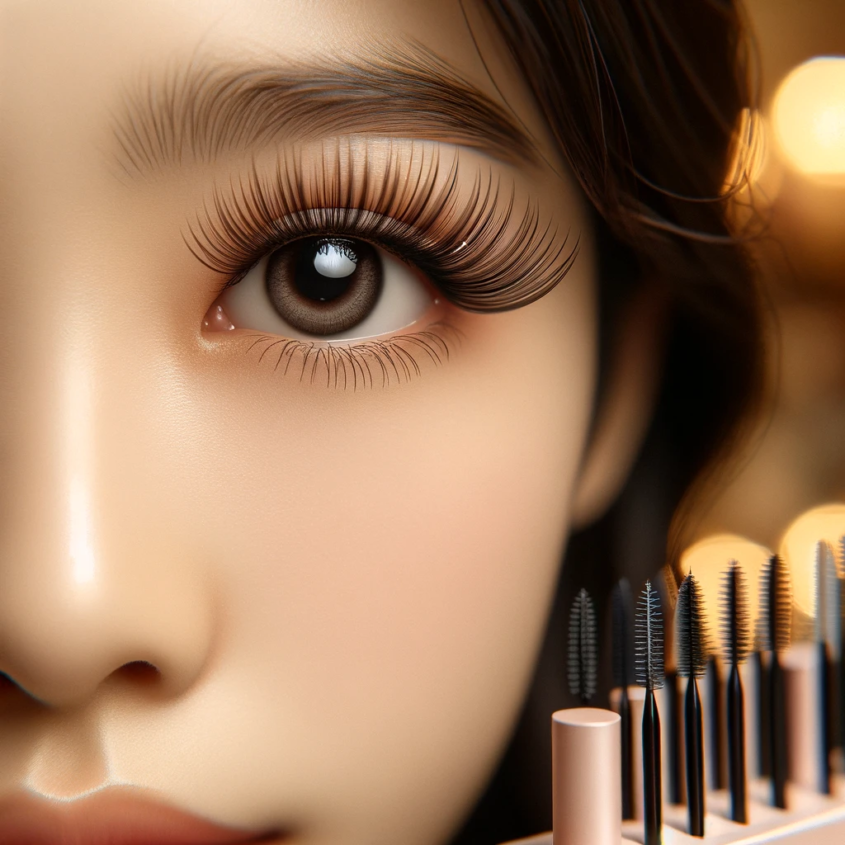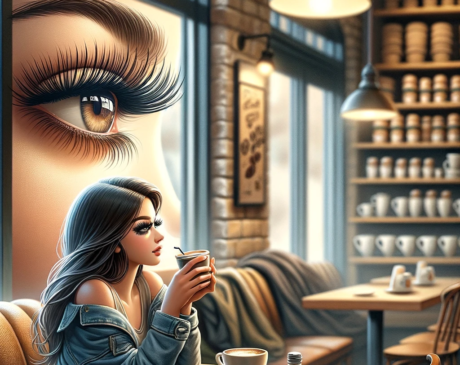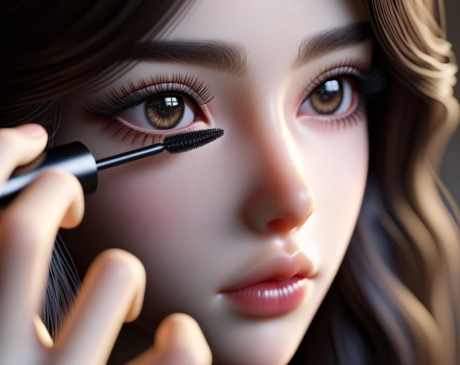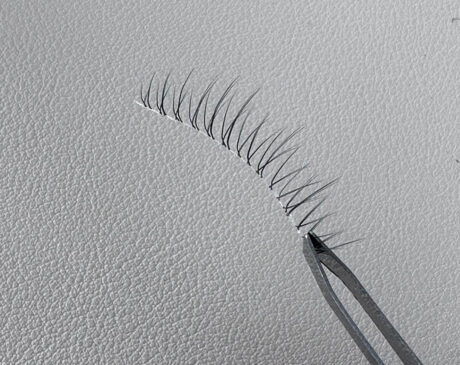Who invented fake eyelashes and why?

The concept of beauty has perpetually evolved throughout history, with each era having its unique standards. In the context of eye aesthetics, the significance of accentuating the eyes has been a constant. Ancient Egyptian art depicts both men and women with heavily lined eyes, suggesting the long-standing allure of prominent eyes. The Renaissance period saw a stark contrast, where women often plucked their eyebrows and eyelashes to achieve a forehead-dominated beauty ideal. This trend shifted dramatically by the Victorian era, where fuller and more natural beauty standards were revered, setting the stage for the invention of enhancements like fake eyelashes.
The Role of Eye Makeup in Fashion
Eye makeup has always been a fashion staple, transcending mere cosmetic appeal to make bold statements. In the 20th century, with the rise of Hollywood and the fashion industry, eye makeup took center stage. Icons like Audrey Hepburn and Twiggy revolutionized eye fashion with their distinctive styles, making eyelashes a focal point of beauty and elegance. The fashion industry’s embrace of dramatic eye makeup further cemented its status as a symbol of glamour and sophistication.
The Origin of Fake Eyelashes
The Invention and the Inventor
The invention of fake eyelashes is credited to Canadian-born American film director D.W. Griffith in 1916. While working on his film, ‘Intolerance,’ Griffith sought a way to enhance actress Seena Owen’s eyes dramatically. He wanted her eyelashes to be long enough to brush her cheeks, thus intensifying her expressions.
Background of the Inventor
D.W. Griffith, a pioneering figure in early cinema, is known for his innovations in film narrative and technology. His quest for hyperbolic and expressive visual storytelling led him to experiment with various makeup and costume techniques, ultimately leading to the creation of fake eyelashes.
The Historical Context of the Invention
The early 20th century was a period of rapid change and innovation in both fashion and cinema. The burgeoning film industry was experimenting with ways to translate emotions and expressions onto the silver screen. Griffith’s invention was born out of the necessity to enhance facial features, especially the eyes, for the exaggerated expressions required in silent films.
The Early Development of Fake Eyelashes
Material and Design Innovations
Initially, fake eyelashes were made from human hair or fringe, glued to the eyelid. This rudimentary design was often uncomfortable and cumbersome. Over time, materials like synthetic fibers were introduced, improving comfort and wearability. The design evolved from a straight strip to a more curved, natural shape, catering to diverse eye shapes and sizes.
The Influence on Early Cinema and Theater
Fake eyelashes quickly became a staple in the theater and film industries, allowing actors to convey deep emotions and expressions that were visible even in the back rows and on less detailed film screens. They became an integral part of the makeup artist’s toolkit, offering a dramatic flair to characters and scenes.
The Cultural Impact in the 20th Century
Fake Eyelashes in Hollywood
Hollywood quickly embraced fake eyelashes, with stars like Marilyn Monroe and Elizabeth Taylor popularizing them. These iconic women became beauty symbols, and their use of fake eyelashes inspired millions to adopt this fashion. The association of fake eyelashes with the glamor of Hollywood cinema played a significant role in their widespread popularity.
The Boom in the Fashion Industry
As fake eyelashes became synonymous with beauty and allure, the fashion industry capitalized on this trend. High-fashion models donned them on runways, and they became a regular feature in beauty magazines. This boom led to the commercialization of fake eyelashes, making them accessible to the general public and not just movie stars or fashion icons.
Technological Advancements in Eyelash Enhancement
Modern Materials and Safety Standards
The evolution of fake eyelashes has been significantly influenced by technological advancements, particularly in the materials used. Early fake eyelashes were made from real hair or synthetic fibers, which could be uncomfortable and sometimes cause allergic reactions. Modern fake eyelashes are made from advanced synthetic materials like lightweight polymers, which provide a more natural look and feel. These materials are hypoallergenic, reducing the risk of irritation. Safety standards have also evolved, with regulatory bodies overseeing the quality and safety of these products to ensure they meet health guidelines.
The Evolution of Application Techniques
Initially, applying fake eyelashes was a tedious process requiring external adhesives and a steady hand. However, the application techniques have evolved drastically. Magnetic eyelashes, which use magnetic liners instead of glue, have become popular due to their ease of application and reusability. Additionally, the development of semi-permanent eyelash extensions offers a longer-lasting solution, where individual lashes are attached to natural lashes by a professional. These advancements have made fake eyelashes more accessible and user-friendly.
Global Adoption and Variations
The Influence in Different Cultures
Fake eyelashes have been adopted by various cultures around the world, each incorporating them into their beauty standards in unique ways. In some Asian countries, the emphasis is on achieving a natural, subtle enhancement, while in Western countries, bolder and more dramatic styles are often preferred. The global beauty industry has embraced these cultural variations, leading to a diverse range of styles catering to different aesthetic preferences.
Variations in Styles Across the World
The style of fake eyelashes varies significantly across the globe. In regions like the Middle East, longer and more voluminous lashes are popular, reflecting a cultural preference for pronounced eye makeup. Conversely, in European countries, a more understated look is often favored. This diversity is reflected in the product offerings by global beauty brands, providing a wide array of options ranging from minimalistic to extravagant styles.
The Role of Fake Eyelashes in Contemporary Beauty Trends
Celebrity Influence
Celebrities have played a pivotal role in popularizing fake eyelashes in contemporary beauty trends. Influential figures like Kim Kardashian and Lady Gaga have often been seen sporting dramatic eyelashes, inspiring fans to adopt similar styles. The trend has been further propelled by the beauty lines of various celebrities, which often include a range of fake eyelashes, thereby making this once-exclusive accessory a staple in everyday beauty routines.
Social Media and Beauty Vlogging
The rise of social media platforms and beauty vlogging has significantly influenced the popularity of fake eyelashes. Beauty influencers and vloggers often showcase various eyelash styles and application techniques, making them more accessible to a broader audience. Tutorials and reviews on platforms like YouTube and Instagram have demystified the application process, encouraging more individuals to try them out.
Ethical and Health Considerations
The Debate Over Animal Testing
The beauty industry’s use of animal testing has been a contentious issue. Many fake eyelashes, especially those made from natural hair, have historically been subject to animal testing. This has led to a growing demand for cruelty-free and vegan options, with consumers increasingly opting for brands that commit to ethical manufacturing practices.
Health Implications of Long-Term Use
The long-term use of fake eyelashes can have health implications. Improper application and removal techniques can damage natural lashes, leading to thinning or loss. Furthermore, the adhesives used can sometimes cause allergic reactions or infections if not used properly. It’s essential for users to follow safety guidelines and use high-quality products to minimize these risks.
Future Trends and Innovations
The Rise of Eco-Friendly and Sustainable Options
As environmental awareness and sustainability become increasingly important in consumer choices, the beauty industry is adapting, with eco-friendly and sustainable options for fake eyelashes gaining popularity. Future trends are likely to see a surge in lashes made from biodegradable materials or sourced from sustainable fibers. This shift not only caters to the growing eco-conscious market but also aligns with global efforts to reduce waste and minimize environmental impact.
Technological Innovations on the Horizon
Technological advancements are set to revolutionize the fake eyelash industry further. Innovations such as 3D printing could allow for more personalized and precise eyelash designs, tailored to individual eye shapes and preferences. Additionally, developments in smart technology might lead to interactive eyelashes that can change length or color based on user preferences or environmental stimuli, merging beauty and technology in exciting new ways.
Fake eyelashes have journeyed from a novelty item in early cinema to a ubiquitous beauty accessory. They’ve transcended mere fashion statements to become tools of self-expression and identity. As we look towards the future, the continuous evolution of fake eyelashes in terms of materials, application techniques, and ethical considerations reflects not just advancements in beauty technology, but also a deeper understanding of consumer needs and global concerns. The intersection of beauty and innovation will undoubtedly keep fake eyelashes at the forefront of cosmetic trends.
FAQs
- Who is credited with inventing fake eyelashes? D.W. Griffith, a Canadian-born American film director, is credited with inventing fake eyelashes in 1916. He introduced them to enhance an actress’s eyes dramatically for his film, ‘Intolerance’.
- What were the original materials used in making fake eyelashes? The original fake eyelashes were made from human hair or synthetic fibers, often attached to a strip that was then glued to the eyelid.
- How have fake eyelashes evolved in terms of safety and comfort? Over the years, fake eyelashes have evolved significantly in terms of materials and design for improved safety and comfort. Modern lashes are made from lightweight, hypoallergenic materials, and the application techniques have become simpler and more user-friendly.
- What role did fake eyelashes play in early cinema? In early cinema, especially in silent films, fake eyelashes played a vital role in enhancing actors’ facial expressions, making them more visible and dramatic on screen. They helped convey emotions effectively in the absence of dialogue.
- Are there any ethical concerns associated with modern fake eyelashes? Yes, ethical concerns in the modern fake eyelash industry mainly revolve around animal testing and the use of animal fur. This has led to a growing demand for cruelty-free and vegan eyelash options, with many brands now focusing on ethical production practices.



